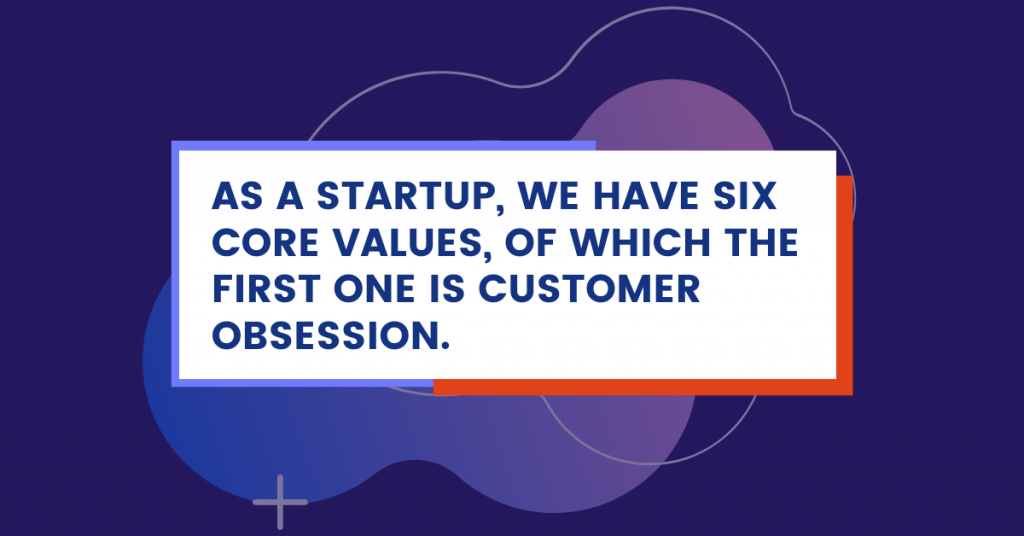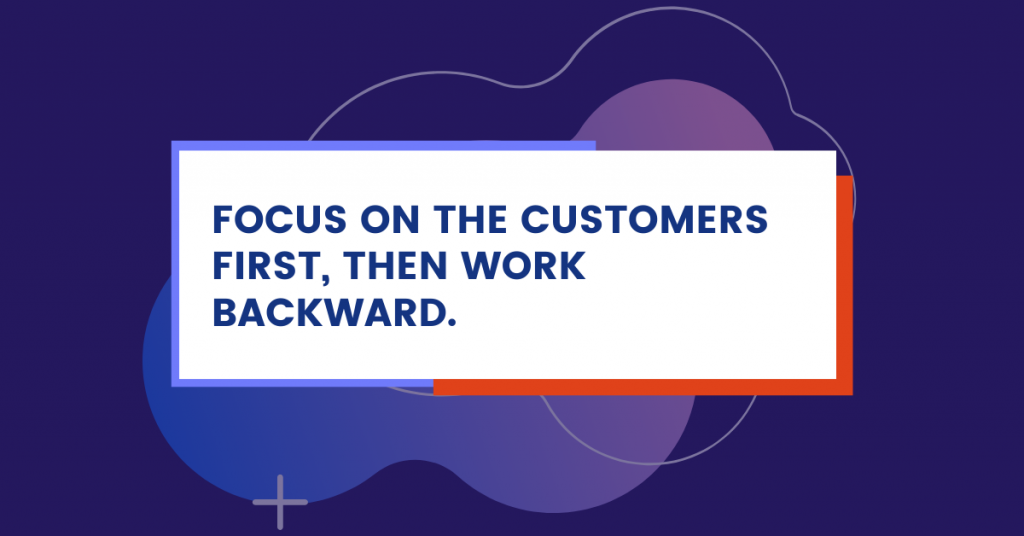Toan Ngo manages Investor Relations at Logivan, and takes us behind the scenes on how to place customers at the heart of marketing. And how being customer-obsessed has contributed to Logivan’s growth.
Tell us about your past roles and current role at Logivan?
I’ve been a generalist throughout my career at Logivan and have been in different positions. I started my journey with Logivan in 2018 as a lead backend Ruby on Rails developer. I built an app for Logivan drivers and shippers, and also a platform monitoring app. In April 2018, I moved to growth marketing and acted as a growth hacker to help the company acquire 13500 shippers and over 26000 truckers.
When the company grew bigger, I became the Marketing Manager and managed a team of 12 in Hanoi offices for multiple marketing campaigns. Currently, I’m working as an Investor Relations, assisting the company with the fundraising process, and providing regular updates about the company to our current and future investors.
How does a typical day at work look for you?
First thing in the morning, I look at my to-do list and eat my frog first, which means I do the hardest and the most important task of the day first. I make a lot of lists and prioritize the important tasks for the week. Later, I check on my team members’ progress.
I learned from Andy Grove’s three activities featured in the book “High Output Management” about:
- information gathering,
- decision making, and
- “nudging” others.

I see my team members’ reports, check their progress, make important decisions, ask questions to push them in the right direction, and offer them help if needed. It is all about giving directions and get out of the way for my team to shine. The managerial process, I feel, could be much easier if managers follow the steps mentioned in the book. If you’ll not spend hours micromanaging your team members, then the output will be much higher as the team will be accountable for the trust you place on them.
During the day, I try to create uninterrupted blocks of time to get my tasks done outside of meeting times. I’m not too good at multitasking, so switching tasks cost me a lot of time and effort. Hence, I mute most of my Slack notifications, set silence mode on my phones for the day, and do not check messages once I’m in the zone.
Also, realized using distraction-blocking apps like SelfControl for Mac and Cold Turkey makes my life easier. I wrap up the day with making to-do lists for work to be done the next day, usually creating it at night. But I feel making the to-do-list in the afternoon helps me prioritize the important things the next day. Most days, I return home quite late. I wrap up my day at 7.30 in the evening. As I grow older, I understand the importance of sleep and eating. When I eat well, sleep well on a great mattress, and run regularly, I feel way more positive. I am able to achieve more things and have the ability to focus better.
What is your take on being customer-centric in marketing?
As a startup, we have six core values, of which the first one is customer obsession.
This is a lesson we took from Amazon. Their customer obsession core value has helped them grow from a small online bookstore to a trillion-dollar e-commerce giant. We measure customer obsession score monthly during the team’s performance review. We rate each team member based on their demonstration level. The demonstration level ranges from Level 0 (Not demonstrated) to Level 2 (Exemplified). Each team member is reminded constantly and rated based on how they deliver excellent experiences to our customers.
To bring the team closer to our customers (and to improve everyone’s score), we initiate monthly communication with our customers through chat or call. Sometimes, we also invite them to our office personally. We even take our members on truck trips to get the first-hand experience on how truck drivers operate, so they can get insights on how to serve them better. The trip ranges from a few hours delivery to two days North-South trips. The team members get a chance to see how our drivers drive, eat, and sleep for delivery. Those were memorable events, and we learned a lot during those field trips.
[Now you can also listen to Toan’s customer-centric growth marketing strategies on our podcast]
How do you think customer-centricity plays out as a part of a marketing plan?
Personally, I don’t think it’s necessary to add customer obsession to any marketing plan. It should be the company’s core value at heart. Focus on the customers first, then work backward. At Logivan, we have our ‘Monthly Lead-athon Strategy Meeting’ – an event where all heads of departments come together to discuss company strategy and restress the importance of focusing on delivering excellent services to our customers. In that strategy meeting, we set our Objectives and Key Results (OKR) and directions for the next quarters to improve both customer acquisition and retention. The marketing team, for example, will have its OKR goals, which then translate into all marketing activities.
We have a giant TV with gaming dashboards in the growth marketing team room where we monitor all necessary scores, along with other important metrics such as the number of trips, trucks, fulfillment, GMV. The scores serve as a constant reminder for the growth marketing team that how important it is to put the customers at the heart of any strategy or marketing plan we create.
Can you tell us one strategy where you put the customer at the heart of your marketing?
At Logivan, we believe that the more we understand what motivates our customers at a personal level, the more we’ll be able to work on our offering to reach their desired outcomes. We understand that the drivers spend all the available time away from their homes, families, friends to stay on the road to deliver products on time and to streamline the economy. Yet, drivers are extremely misunderstood – they are plagued by stereotypes from other people.
We organized a roadshow event series to thank the drivers for their diligent services and ensured any truck round Northern Border areas have the Logivan logo. Then there were social events organized to onboard drivers with our app. The events included giveaways, mini-games, karaoke, and sweepstakes. It was to create a place where our drivers could hang out with each other and socialize. We also encouraged them to install our apps during the event. That event series was a resounding success.
We onboarded a total of 1100 drivers during those events and received tonnes of branding impressions for Logivan. When we learned that it’s legally required for truckers to have reflective stickers in at the back of their trucks, we created truck stickers with the Logivan logo and provided them to our truckers. It costs us only $2 to print two stickers, but we have nearly 50,000 trucks with our stickers. It’s the most efficient branding activity we’d ever created, and we now have 5% of all trucks in Vietnam branded with Logivan. If you are in Vietnam, there is a chance that you’ll see a truck with our branding because they’re everywhere.

What tools do you utilize that help you achieve better results?
I use Asana, Google Sheet, and Slack for project management. I recently switched to AirTable. AirTable has helped me organize my life, literally. I write down everything clearly so everyone can look at the mega AirTable projects. I, as a manager, can get a big picture of the project descriptions, goals, KPI, and progress – all in a single AirTable base. Compared to other traditional project management software, AirTable is extremely customizable and easily manageable across projects. It’s also much easier to send it as a report to the upper management, so they get a clear picture of how the tasks are progressing. (If Airtable isn’t exactly what you are looking for, there are also many Airtable alternatives you can choose from.)
I also use other tools such as Agenda; Apple Notes for note-taking, Notability, and GoodNotes on my iPad, and Apple Pencil for brainstorming. Initially, I used Evernote and other note-taking apps, but soon found out that they are not designed for day-to-day work. Agenda organizes notes chronologically, so it’s very easy to look for the tasks you did yesterday, the tasks you will finish today and also other things that need your attention. I find it more work-friendly.
Apart from helping me organize my day-to-day tasks, these tools gave me recognition as a technology early adopter. Also, as a part of a technology company, I believe in embracing change and continuous learning.
Thank you, Toan, for taking out time to tell us about Logivan’s growth tactics and for sharing your project management strategies with us.
| Here’s What You Can Read Next |











![How Customer Centricity is the Key to Growth Strategy [Customer Spotlight]](https://www.moengage.com/wp-content/uploads/2020/06/FireShot-Capture-004-Customer-Spotlight-How-Customer-Centricity-is-the-Key-to-Growth-Str_-www.moengage.com_.png)




